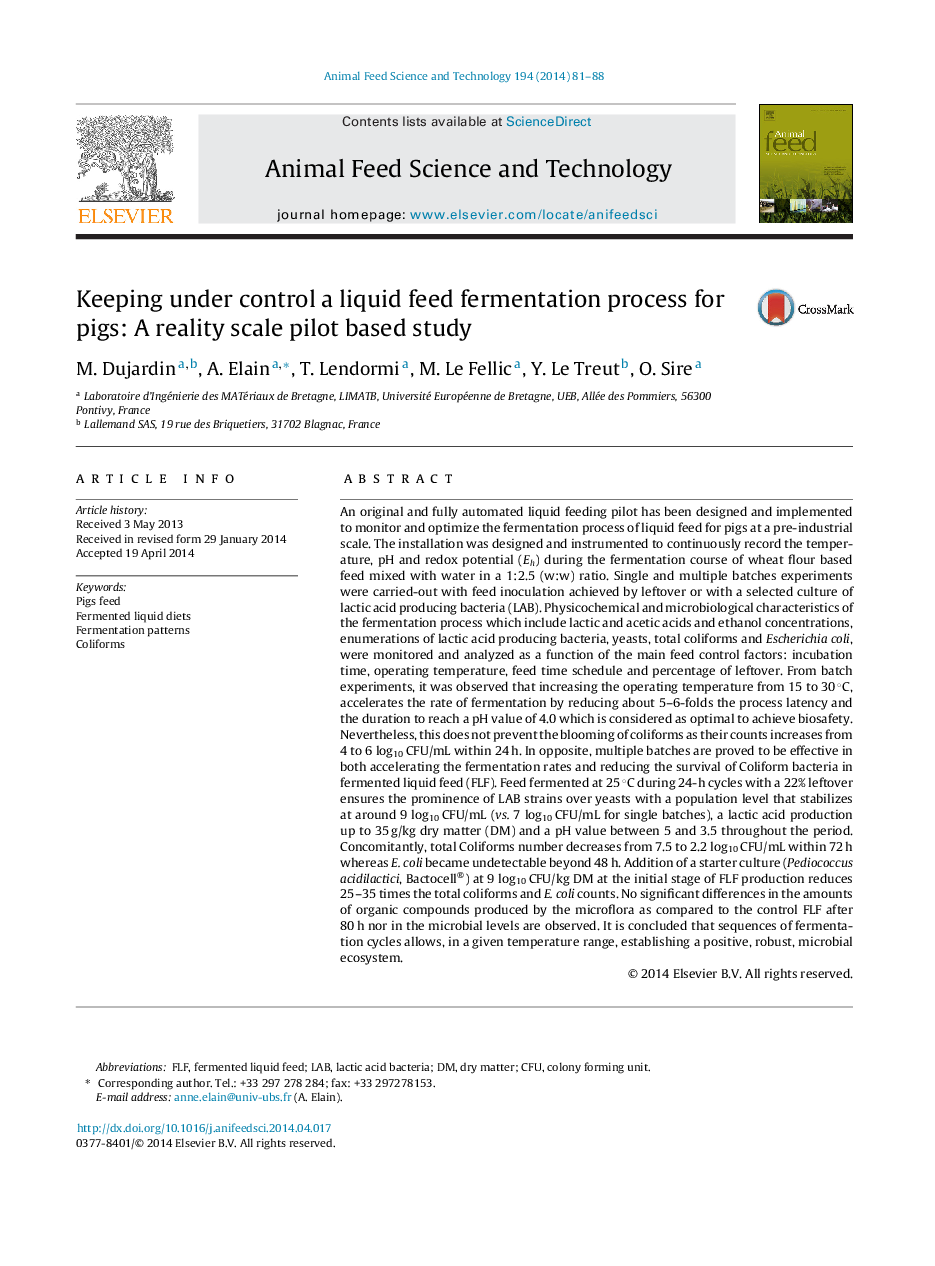| کد مقاله | کد نشریه | سال انتشار | مقاله انگلیسی | نسخه تمام متن |
|---|---|---|---|---|
| 2419568 | 1552391 | 2014 | 8 صفحه PDF | دانلود رایگان |
An original and fully automated liquid feeding pilot has been designed and implemented to monitor and optimize the fermentation process of liquid feed for pigs at a pre-industrial scale. The installation was designed and instrumented to continuously record the temperature, pH and redox potential (Eh) during the fermentation course of wheat flour based feed mixed with water in a 1:2.5 (w:w) ratio. Single and multiple batches experiments were carried-out with feed inoculation achieved by leftover or with a selected culture of lactic acid producing bacteria (LAB). Physicochemical and microbiological characteristics of the fermentation process which include lactic and acetic acids and ethanol concentrations, enumerations of lactic acid producing bacteria, yeasts, total coliforms and Escherichia coli, were monitored and analyzed as a function of the main feed control factors: incubation time, operating temperature, feed time schedule and percentage of leftover. From batch experiments, it was observed that increasing the operating temperature from 15 to 30 °C, accelerates the rate of fermentation by reducing about 5–6-folds the process latency and the duration to reach a pH value of 4.0 which is considered as optimal to achieve biosafety. Nevertheless, this does not prevent the blooming of coliforms as their counts increases from 4 to 6 log10 CFU/mL within 24 h. In opposite, multiple batches are proved to be effective in both accelerating the fermentation rates and reducing the survival of Coliform bacteria in fermented liquid feed (FLF). Feed fermented at 25 °C during 24-h cycles with a 22% leftover ensures the prominence of LAB strains over yeasts with a population level that stabilizes at around 9 log10 CFU/mL (vs. 7 log10 CFU/mL for single batches), a lactic acid production up to 35 g/kg dry matter (DM) and a pH value between 5 and 3.5 throughout the period. Concomitantly, total Coliforms number decreases from 7.5 to 2.2 log10 CFU/mL within 72 h whereas E. coli became undetectable beyond 48 h. Addition of a starter culture (Pediococcus acidilactici, Bactocell®) at 9 log10 CFU/kg DM at the initial stage of FLF production reduces 25–35 times the total coliforms and E. coli counts. No significant differences in the amounts of organic compounds produced by the microflora as compared to the control FLF after 80 h nor in the microbial levels are observed. It is concluded that sequences of fermentation cycles allows, in a given temperature range, establishing a positive, robust, microbial ecosystem.
Journal: Animal Feed Science and Technology - Volume 194, August 2014, Pages 81–88
